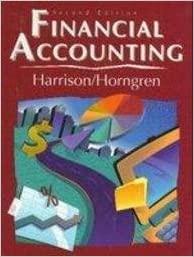The pharmaceutical conglomerate Pfizeneca has discovered a new vaccine for COVID19, called covbegonium. The vaccine is subsequently approved in Australia and New Zealand so Pfizeneca can sell its vaccine there. In Australia, demand for covbegonium is QAU = 20.5 PAU , where QAU is the quantity demanded when the price in Australia is PAU . In New Zealand, demand for covbegonium is QNZ = 5 PNZ, where QNZ is the quantity demanded when the price in New Zealand is PNZ, denominated in Australian dollars. (All monetary amounts in this problem are given in Australian dollars.) Pfizeneca has a single manufacturing plant in Australia and its marginal cost is constant at $10. In this problem you can ignore the cost of transporting covbegonium from the site of manufacture to consumers, regardless of where they are located.

(a) (6 marks) Assuming that Pfizeneca can successfully charge different prices in Aus- tralia and in New Zealand, what profit-maximising prices PAU and Psz would it charge in each of the two countries? What quantity of coubegonium would it sell in each of the two countries? Provide intuition for your answer. (b) (7 marks) Corbegonium is later approved for sale in Canada as well. Canadian demand for coubegonium is QCA = 20.5 - PCA, where QCA is the quantity demanded when the price in Canada is PCA. Assuming that Pfizeneca can successfully charge different prices in Australia, in Canada, and in New Zealand, what profit-maximising prices Pau, PCA, and Pinz would it charge in each of the three countries? What quantity of coubegonium would it sell in each of the three countries? (C) (6 marks) After building a second manufacturing plant in New Zealand, Pfizeneca can now produce coubegonium at either or both of its manufacturing plants. The marginal cost of producing coubegonium at the new plant is 0.1Q, where Q is the total quantity of covbegonium produced at the plant. The marginal cost at the old plant remains $10. At the same time, Pfizeneca finds itself temporarily unable to sell coubegonium in Canada due to import restrictions. Assuming that Pfizeneca can successfully charge different prices in Australia and in New Zealand, what profit-maximising prices Pau and Pnz would it charge in each of the two countries? What quantity of coubegonium would it sell in each of the two countries? How much would Pfizeneca produce at each of its plants and why? (Hint 1: You may want to think about the last question first. Hint 2: Using the profit-maximising condition for Pfizeneca, you may want to express QA as a function of Qnz, where Q* denotes the profit-maximising quantity for the respective country.) () (6 marks) Eventually, Canadian import restrictions are lifted and Pfizeneca can sell coubegonium there again. Assuming that Pfizeneca can successfully charge different prices in Australia, in Canada, and in New Zealand, what profit-maximising prices PAU, PCA, and Pnz would it charge in each of the three countries? What quantity of corbegonium would it sell in each of the three countries? How much would Pfizeneca produce at each of its plants and why? Why did the profit-maximising quantity sold in New Zealand change relative to part (c)? (a) (6 marks) Assuming that Pfizeneca can successfully charge different prices in Aus- tralia and in New Zealand, what profit-maximising prices PAU and Psz would it charge in each of the two countries? What quantity of coubegonium would it sell in each of the two countries? Provide intuition for your answer. (b) (7 marks) Corbegonium is later approved for sale in Canada as well. Canadian demand for coubegonium is QCA = 20.5 - PCA, where QCA is the quantity demanded when the price in Canada is PCA. Assuming that Pfizeneca can successfully charge different prices in Australia, in Canada, and in New Zealand, what profit-maximising prices Pau, PCA, and Pinz would it charge in each of the three countries? What quantity of coubegonium would it sell in each of the three countries? (C) (6 marks) After building a second manufacturing plant in New Zealand, Pfizeneca can now produce coubegonium at either or both of its manufacturing plants. The marginal cost of producing coubegonium at the new plant is 0.1Q, where Q is the total quantity of covbegonium produced at the plant. The marginal cost at the old plant remains $10. At the same time, Pfizeneca finds itself temporarily unable to sell coubegonium in Canada due to import restrictions. Assuming that Pfizeneca can successfully charge different prices in Australia and in New Zealand, what profit-maximising prices Pau and Pnz would it charge in each of the two countries? What quantity of coubegonium would it sell in each of the two countries? How much would Pfizeneca produce at each of its plants and why? (Hint 1: You may want to think about the last question first. Hint 2: Using the profit-maximising condition for Pfizeneca, you may want to express QA as a function of Qnz, where Q* denotes the profit-maximising quantity for the respective country.) () (6 marks) Eventually, Canadian import restrictions are lifted and Pfizeneca can sell coubegonium there again. Assuming that Pfizeneca can successfully charge different prices in Australia, in Canada, and in New Zealand, what profit-maximising prices PAU, PCA, and Pnz would it charge in each of the three countries? What quantity of corbegonium would it sell in each of the three countries? How much would Pfizeneca produce at each of its plants and why? Why did the profit-maximising quantity sold in New Zealand change relative to part (c)







